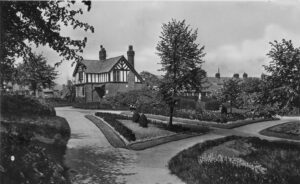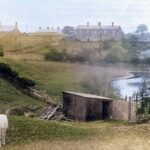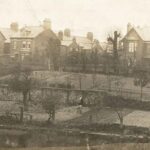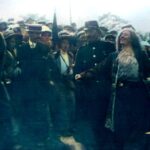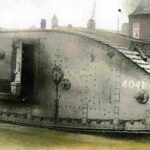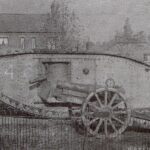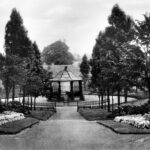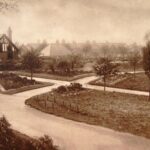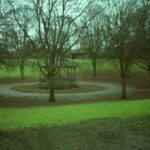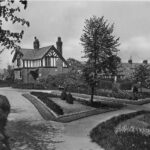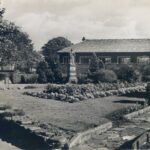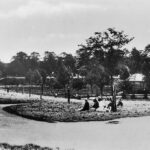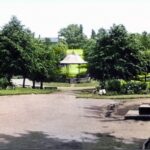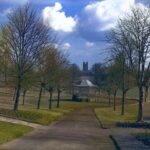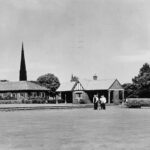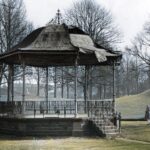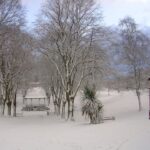Belle Vue Park
Proposals for a public park were first put forward in 1876, but it wasn’t until 1907 that the site was purchased by the Borough Council for £4346 1s 7d. from the Wynnstay estate, which had partly been used for sand and gravel extraction.
Initially it was known as the Parciau with development beginning in 1910 with the entrance gates, original park railings and Lodge being provided by public subscriptions. In 1912 the National Eisteddfod was held here. It made national headlines after the Chancellor, David Lloyd George, was heckled by suffragettes as he made a speech.
The first tenant of the Lodge became the Parks Superintendent on 17th February 1914. Two bowling greens were constructed, one to be a “crown” green and the other a “flat” green and were opened to the public on 30th May 1914. The construction of the bandstand also dates to 1914 and was opened on the afternoon of 19th August by the mayor. It was often used for Sunday brass band concerts.
In recognition of the contribution to the war effort made by the residents of Wrexham, a “Landship” tank Mark 1 was given to the Local War Savings Committee and this was proudly displayed in the park. Also, in 1916 a cannon dating from the Crimean War bearing the inscription: “Captured Sevastopol 1855”, was relocated from Guildhall Square to the Parciau.
The tank was sold for scrap in 1928 when its place was taken by a statue of Queen Victoria which was moved from the Guildhall Square in 1928 to its present location. The statue was donated by the sculptor Henry price in 1905 to mark the coronation of King Edward VII.
Between 1940 and 1942 the Council sold off non-essential iron for scrap, including the Crimean War cannon and park boundary railings to help the war effort. The Parciau played its part in the “Dig for Victory” campaign between 1941 and 1944. The park railings were removed to provide iron for the war effort and he eastern part of the park were dug up for schoolchildren and adults to grow potatoes, tomatoes and other food.
By the late 1960’s disuse and disrepair lead to calls for demolition of the bandstand. However, a restoration project in 1973 saved this important feature. The pavilion was also converted in the 1970’s to provide a Community Centre. Bellevue Park was refurbished in 1999 with funding from the National Lottery, Welsh Development Agency, European Union and others. In 1919 Major Kearsley of the Royal Welsh Fusiliers proposed erecting a RWF memorial in the Parciau or in High Street. Almost a century later, in October 2017 a memorial was erected in the park to commemorate all from the borough who served and died in the First World War. The Friends of Bellevue Park commissioned the slate memorial and raised funds for it. It stands where there was previously a Gorsedd stone circle, for Eisteddfod ceremonies.

